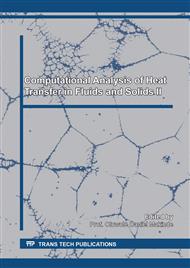[1]
J.F. Zuzel, R.R. Allmaras, R. Greenwalt, Runoff and soil erosion on frozen soils in Northeastern Oregon. J. Soil & Water Conserv. 37, 351-354, (1982).
Google Scholar
[2]
F. M. dos Santos, J. A. de Lollo, F. F. Mauad, Estimating the surface runoff from natural environment data, Management of Environmental Quality: An International Journal, 28(4), 515-531,(2017).
DOI: 10.1108/meq-07-2015-0137
Google Scholar
[3]
M. Danáčová, P. Valent, R. Výleta, Evaluation of surface runoff generation processes using a rainfall simulator: A small scale laboratory experiment. IOP Conf. Series: Earth and Environmental Science 95,022016(pp.1-8), (2017).
DOI: 10.1088/1755-1315/95/2/022016
Google Scholar
[4]
D.D. Davis, R. Horton, J. L. Heitman, T. S. Ren, An experimental study of coupled heat and water transfer in wettable and artificially hydrophobized soils, Soil Sci. Soc. Am. J., 78(1), 125–132, (2014).
DOI: 10.2136/sssaj2013.05.0182
Google Scholar
[5]
S.V. Nerpin, A.F. Chudnovskiy, Soil physics. Science, Moscow, (1967).
Google Scholar
[6]
Y. M. Denisov, Mathematical model of moisture, heat and salt transfer in the soil. Meteorology and Hydrology3, 71-78, (1978).
Google Scholar
[7]
L. Rundora, O. D. Makinde, Effects of Navier slip on unsteady flow of a reactive variable viscosity non-Newtonian fluid through a porous saturated medium with asymmetric convective boundary conditions. Journal of Hydrodynamics,Ser. B, 27(6), 934-944, (2015).
DOI: 10.1016/s1001-6058(15)60556-x
Google Scholar
[8]
T. Chinyoka, O. D. Makinde, Analysis of non-Newtonian flow with reacting species in a channel filled with a saturated porous medium. Journal of Petroleum Science and Engineering, 121, 1-8, (2014).
DOI: 10.1016/j.petrol.2014.07.004
Google Scholar
[9]
L. Rundora, O.D. Makinde, Buoyancy effects on unsteady reactive variable properties fluid flow in a channel filled with a porous medium. Journal of Porous Media, 21(8), 721–737, (2018).
DOI: 10.1615/jpormedia.2018015707
Google Scholar
[10]
L. Rundora, O.D. Makinde, Effects of suction/injection on unsteady reactive variable viscosity non-Newtonian fluid flow in a channel filled with porous medium and convective boundary conditions. Journal of Petroleum Science and Engineering, 108, 328-335, (2013).
DOI: 10.1016/j.petrol.2013.05.010
Google Scholar
[11]
O.D. Makinde, T. Chinyoka, L. Rundora, Unsteady flow of a reactive variable viscosity non-Newtonian fluid through a porous saturated medium with asymmetric convective boundary conditions. Computers and Mathematics with Applications, 62, 3343–3352, (2011).
DOI: 10.1016/j.camwa.2011.08.049
Google Scholar
[12]
S. Whitaker, Flow in porous media I: A theoretical derivation of Darcy's law, Transport in Porous Media. 1: 3–25, (1986).
DOI: 10.1007/bf01036523
Google Scholar
[13]
H.C. Brinkman, A calculation of the viscous force exerted by a flowing fluid on a dense swarm of particles, Applied Scientific Research,1, 27–34, (1949).
DOI: 10.1007/bf02120313
Google Scholar
[14]
D.A. Nield, A. Bejan, Convection in porous media, Springer-Verlag, New-York (1992).
Google Scholar
[15]
K.L. Bristow, R. Horton, Modeling the impact of partial surface mulch on soil heat and water flow, Theor. Appl. Climatol.,54(1/2), 85–98,(1996).
DOI: 10.1007/bf00863561
Google Scholar
[16]
C.G. Gurr, T.J. Marshall, J.T. Hutton, Movement of water in soil due to a temperature gradient, Soil Sci., 74, 335–345, (1952).
DOI: 10.1097/00010694-195211000-00001
Google Scholar
[17]
T. Fetzer, J. Vanderborght, K. Mosthaf, K. M. Smits, R. Helmig, Heat and water transport in soils and across the soil-atmosphere interface: 2. Numerical analysis, Water Resour. Res., 53, 1080–1100, (2017).
DOI: 10.1002/2016wr019983
Google Scholar


